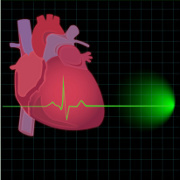As February is American Heart month, we take time to reflect upon cardiovascular disease, as it is the number one killer of Americans. Maybe you saw the news last week and watched former president Bill Clinton undergo a long hospital stay for his blocked arteries, again. Back in 2004, he had quadruple bypass surgery. The surgery was expected to last about 10 years, however, six years later he went back in for a re-do because of heart symptoms he experienced. In his case, the doctors used a stent to keep the vessels open, however, they expect he’ll be back in the next several years for more surgery.
A bypass is done when blood vessels that supply blood and oxygen to the heart itself become blocked. There are about one million surgeries done every year, however, this includes repeat offenders like former president Clinton. A typical bypass lasts about ten years, unless arteries become re-blocked sooner than expected.
During the bypass, surgeons take a piece of a healthy artery from elsewhere in the body and use it to re-route the blood flow around the blockage in the coronary artery that feed the heart. A person might undergo one, two, three, or four artery bypasses depending how many are involved and blocked.
After the surgery, patients usually stay in the hospital for four to six days (like Clinton) while all their heart markers and blood pressures are monitored. After they are released, many go through cardiac rehabilitation that teaches them stress management techniques as well as diet and exercise programs.
The most common symptoms of a blocked artery are chest pain or tightness. This might radiate up to your jaw or down your arm and may or may not lead to a heart attack. Risk factors include elevated blood pressure (140/90 mmHg or higher), smoking, high cholesterol levels, overweight/obese, elevated blood sugars, sedentary lifestyle, poor diet, high stress and a family tree full of heart disease.
Do your part to reduce your risk factors by monitoring your blood pressure, cholesterol and blood sugar. Get your weight into a healthy BMI (body-mass index), start eating high fiber, more vegetable foods and start moving!






Add a CommentComments
There are no comments yet. Be the first one and get the conversation started!